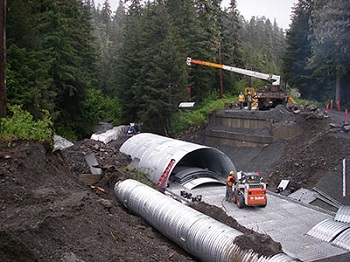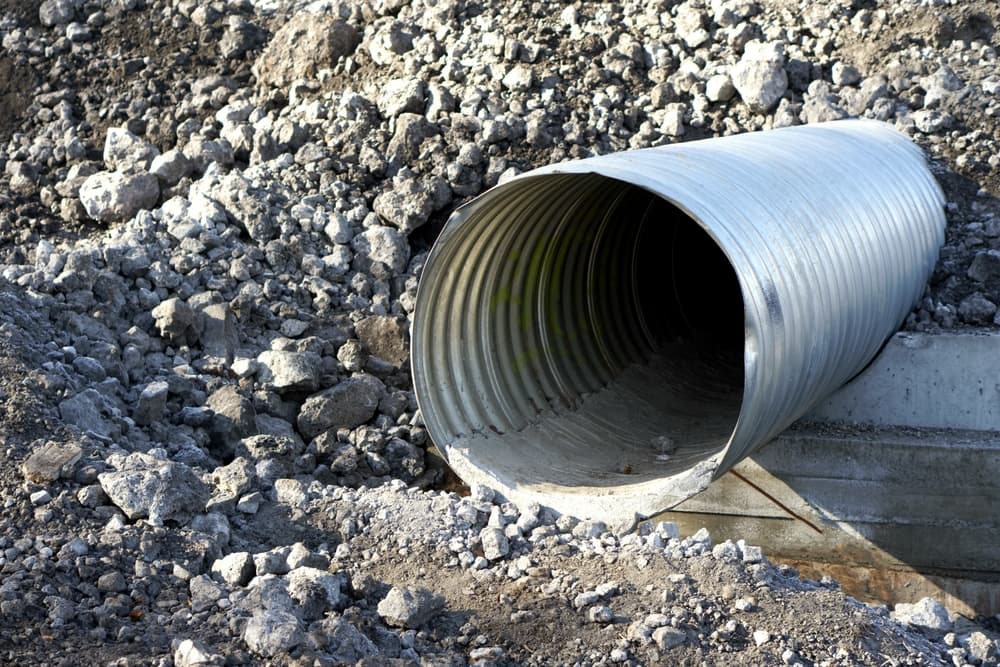Specialist Culvert Installation for Resilient Facilities
Specialist Culvert Installation for Resilient Facilities
Blog Article
Culvert Installation Made Easy: Step-by-Step Guide for Success
Installing culverts might appear like an uncomplicated job, yet making certain an effective result requires mindful preparation and execution. From selecting the appropriate culvert dimension to integrating appropriate water drainage steps, each step in the installment procedure plays a critical role in the performance and durability of the culvert system. By adhering to a methodical method and taking note of vital information, the installation can continue efficiently, lessening possible concerns down the line. Stay tuned to discover the necessary actions and considerations that can make culvert installment a smooth and successful endeavor.
Choosing the Right Culvert Size
Selecting the ideal culvert size is vital for ensuring effective water circulation and structural honesty in culvert installation jobs - Pad Construction. The dimension of the culvert directly influences the circulation capability of water via the structure. A culvert that is as well tiny can lead to flooding and overflow, while one that is also big may cause reduced water velocity, possibly triggering sediment accumulation and obstructions
To establish the best culvert size, factors such as the watershed location, top flow rates, and hydraulic efficiency requirement to be very carefully considered. Calculations based on these criteria help in choosing a dimension that can appropriately handle the anticipated water quantity while decreasing the risk of obstructions and structural failure.
It is crucial to seek advice from design guidelines and criteria to make sure that the picked culvert size meets the job demands and regional guidelines (Pad Construction). By picking the appropriate culvert dimension, task managers can maximize water circulation, avoid prospective problems, and improve the general effectiveness and durability of the culvert installment
Preparing the Installation Website
Effective culvert installment demands meticulous prep work of the installation website to make sure optimal structural assistance and functionality. Before beginning the installment procedure, it is important to clear the site of any debris, plants, or obstructions that can impede the culvert's positioning. Making certain a degree structure is important for the proper alignment and security of the culvert. This may entail grading the site to develop a smooth, even surface area that can properly support the weight of the culvert and any anticipated lots. Additionally, correct compaction of the soil under the culvert is required to stop clearing up or changing gradually.
Additionally, it is essential to consider variables such as soil structure, groundwater degrees, and environmental effects when preparing the installment website. Conducting a detailed site evaluation can assist recognize any type of prospective difficulties or dangers that may impact the culvert's performance. By making the effort to prepare the installment website correctly, you can assist ensure an effective culvert installment that meets structural demands and makes sure lasting functionality.
Putting the Culvert Appropriately

The quality at which the culvert is put is important for maintaining an appropriate incline for water flow. Furthermore, the culvert should be oriented correctly to make sure that the inlet and electrical outlet are in the proper locations. Pad Construction.
Backfilling and Compacting the Soil
Correct backfilling and compaction of the dirt around the culvert is crucial to ensure security and prevent prospective concerns in the future. Once the culvert is appropriately put, the following crucial action is to backfill the location around it with ideal material.
After putting the backfill material, it is important to compact it in layers of uniform thickness. Utilizing a compactor or a mechanical tamper, small the dirt delicately to stay clear of damaging the culvert. Compaction helps in decreasing the possibilities of negotiation and guarantees consistent support around the culvert. It is important to compact the soil evenly on all sides of the culvert to preserve its structural stability.
Proper backfilling and compaction not just offer security to the culvert but additionally aid in stopping soil erosion and keeping the durability of the culvert system.
Making Certain Appropriate Water Drainage Combination
Integrating efficient water drainage options plays a crucial role in the overall functionality and durability of culvert installments. Appropriate drainage integration is important for managing water circulation, protecting against disintegration, and guaranteeing the structural integrity of the culvert system. To attain this, it is crucial to develop an extensive drain plan that thinks about factors such as the volume of water anticipated, the topography of the area, and the kind of soil present.

Additionally, including functions like erosion control procedures, such as riprap or plants, can better boost the efficiency of the drainage system. By meticulously planning and carrying out these drain services, culvert setups can operate successfully and withstand the test of time.
Verdict
In conclusion, appropriate culvert installation is critical for preserving reliable water drainage systems. By choosing the ideal culvert size, preparing the installation site, putting the culvert appropriately, backfilling and condensing the soil, and guaranteeing correct drainage assimilation, success can be attained. Following these steps will certainly aid ensure the longevity and efficiency of the culvert, inevitably adding to the overall success of the drain system.
Report this page